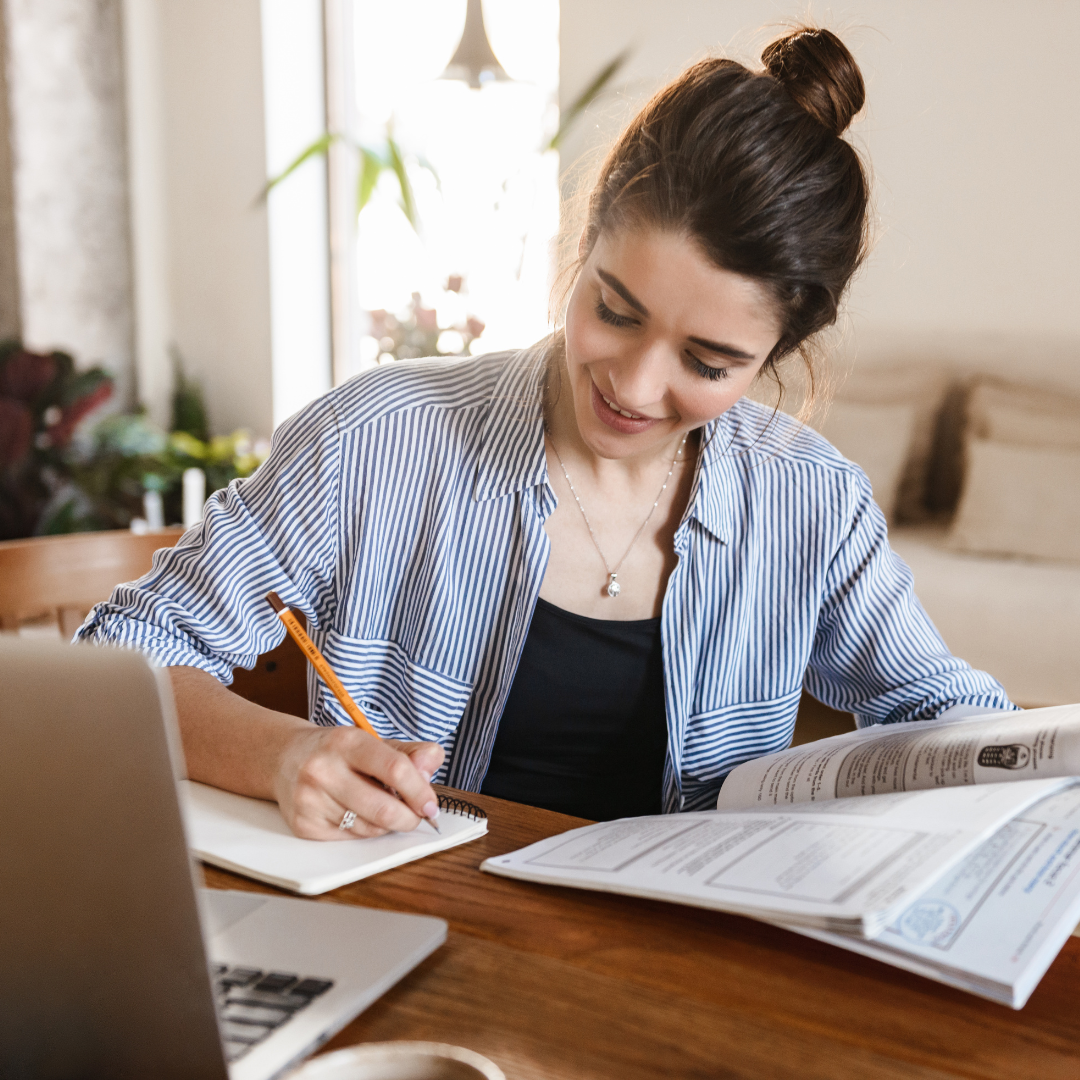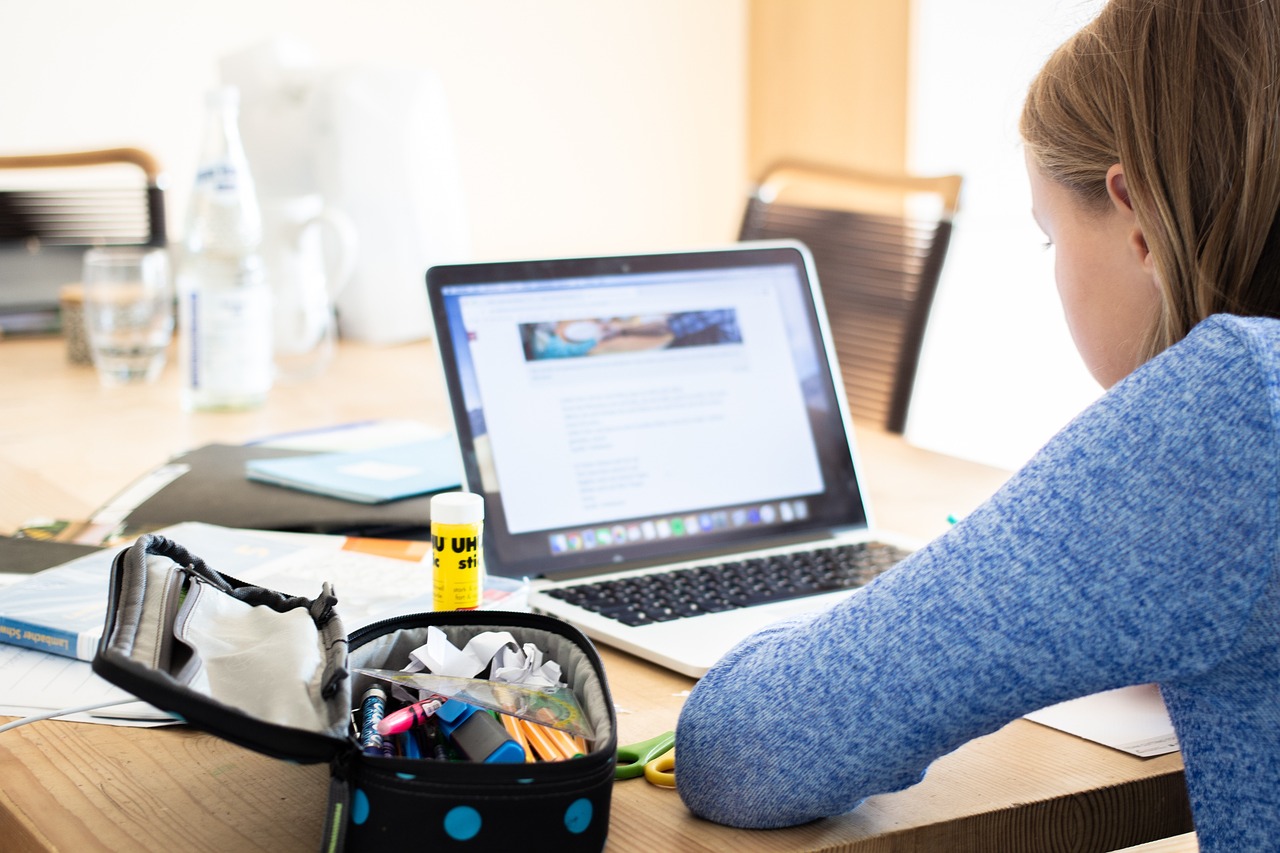Time is Short: How can my teen study effectively?

Have you ever fallen asleep in bed doing homework? Most of us have, and teens do the same thing. There’s a reason. For most of us, our brains are conditioned to think of sleep when we’re in bed, not learning. To study effectively, our brains have to know it’s study time.
One of the ways to make that study time most effective is having a space designated for studying. If your teen is in an environment meant for studying, he’s more apt to learn.
A desk in a quiet place is great for a lot of teens, but that isn’t always possible. If your teen uses her bed for studying, help her make it into a study area when she’s studying. For example, have her use a bedrest or wedge pillow. In addition, a lap desk might be helpful. Only use this equipment when studying. Put the pillow and lap desk away when she’s not studying. It will help her brain get prepared for learning if the environment changes when it’s study time.
Each of us learns differently, but my experience has shown me that there’s a lot of validity to learning styles. One particular learning style is almost always easiest for us and the most interesting. Teens can and do use a variety of methods to learn, but if they can use one that they like, it’s easier to learn because they’re more likely to try. When it’s possible, have your teen use study methods he or she enjoys.
If you have a teen who is an auditory learner, why not let him listen to the material being read from his computer? Ten minutes of his own notes being read from the computer can be a great review. He had to take the notes in class or from an assignment, but reviewing the notes by listening to them is often more effective than reading his notes to himself.
Do you remember things better by listening or reading?

Visual learners need tools like colored markers and sticky notes. They benefit from organizing the material into a chart, let alone having time to read and process words, pictures, and diagrams independently. Giving teens the materials they need and LIKE to use increases learning. Your teen may not like to learn the same way you do, but it doesn’t mean she can’t learn.
Last month we talked about annotating. A lot of visual learners are annotators. Using specific marks, colored highlighters, and sticky notes help them visualize the material they are learning. A lot of visual learners will close their eyes during a test to visualize their books, notes, and annotations.
Next time you’re trying to recall something, close your eyes and try to “see” the page.
What about the teen who moves in order to help himself learn? A lot of people call kinesthetic learners hands-on learners, but being hands-on doesn’t mean your teen has to take the toaster apart in order to learn how it works.
There are teens who learn by doing. To do it well, they do a specific action repeatedly. Most of us learn by repeating things often. Think of a pianist or an artist. By repeating the same motions over and over, she gets better.
Another method a kinesthetic learner might use is by pressing his fingers against a surface as he learns new information. For example, a kinesthetic learner might use his 10 fingers to learn the Bill of Rights. As he reviews the first amendment, he presses his left pinky on the desk. For the second amendment, he presses his left ring finger against the surface of the desk. He continues this for each of the amendments. When he needs to remember the information later, pressing the correct finger against the desk can help him remember.
If you’ve ever seen the movie Akeelah and the Bee, you might remember her moving her hands like she was jumping rope to remember how to spell the words. She was a kinesthetic or tactile learner.
What about you? Can you read without movement, or does tying that information to an action help it stick?
When I work with a teen, I find out his or her learning style early on. Nearly all of us have a primary style. With that information and talking with the teen about his or her interests, I work to find the best ways to study, do homework, and learn. It’s not that a kinesthetic learner can’t learn with visual methods. But, it will be harder than it needs to be.
If your teen has a teacher generous enough to give an assignment which can be completed multiple different ways to get credit, have your teen review the choices. If he knows his learning style, it will likely guide him to the assignment he’d do best. Learning isn’t always easy, but there is no reason to make it harder or less enjoyable.
Finally mama, how are you helping your teen to learn? I know of some mamas who regularly walk by their teens’ doors to make sure work is getting done. I understand the temptation to check computers to make sure your teen isn’t gaming or texting.
However, if you’re concerned about focus, your walking by may be distracting. It just depends on your teen’s learning style and preferences!
Talk to your teen. Agree how long study sessions will be before your teen goes on break. Let her know that you’ll help her if you can. If a teen has flashcards, offer to go through them. Use your teen’s notes to quiz him. But remember to be mindful of your teen’s learning style because every study method can be done a minimum of three ways.
Let your teen know that learning is important. A’s are nice, but what’s really important is learning.
If you want to talk about your teen’s learning, I’m here to help. Send me a message at jessyka@acecookietutoring.com or visit https://calendly.com/acecookietutoring/talkwithjessyka